Where people once flocked to brick-and-mortar stores for all their shopping needs, they are now increasingly comfortable making purchases from the comfort of their homes via online retailers. However, does this e-commerce vs. retail shift spell the end for traditional retail? Not necessarily.
By 2040, it’s predicted that 95% of purchases will be made online.
While e-commerce continues to grow rapidly, many shoppers still enjoy the experience of browsing stores in person.
Let’s dive deeper and explore how retail and e-commerce can learn to coexist in the future of shopping.
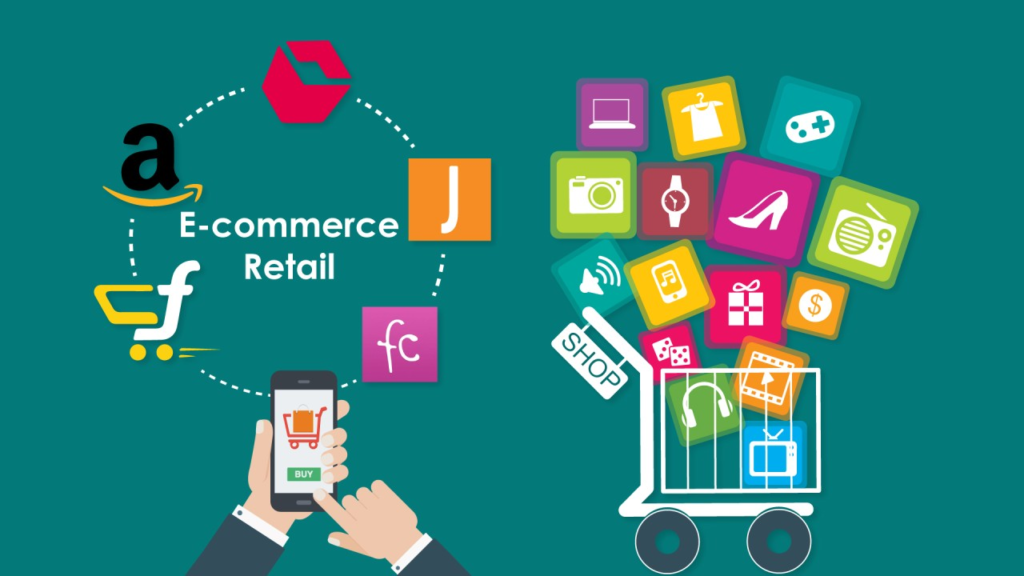
SOURCE: Linkedin
Frequently, people have common misconceptions about e-commerce vs retail. While some of these terms are similar, there are fundamental differences between these two categories of shopping. At the same time, they differ in that they sell products to consumers, but the consumer experience and delivery of products are not the same when shopping online or in a physical store.

SOURCE: FreePik
Approximately 62% of all e-commerce sales are expected to be made through mobile devices (smartphones and tablets) by 2027.
Payment is made digitally, and items are delivered later, whether to a home address or pickup location. No physical interaction with salespeople occurs either during shopping or at checkout.
Shopping from the comfort of home is increasingly appealing to many consumers.
Here are some key benefits of the online shopping model in more detail:
With e-commerce SEO services, buyers have access to any product 24/7 with just a few clicks. No more taking time off work to visit stores during limited operating hours. No more wasting gas driving from place to place hunting for that perfect item. No more pushing a full cart through crowded parking lots and lingering in long checkout lines.
Physical stores struggle to stock more than a small fraction of the tens of millions of products available. However, shelf space or warehouse space is not a constraint for e-commerce retailers. They can list entire catalogs numbering in the hundreds of thousands of SKUs. This extensive selection empowers customers to find niche items, rare collectibles, seasonal merchandise, and entire product categories like books that may not be carried locally.
Traditional retailers incur massive overhead costs for real estate, utilities, staffing, and inventory handling that drive up retail prices. However, e-commerce sellers operate virtually with low fixed costs for warehouses, no middlemen, and automated order fulfillment. This allows online businesses to undercut competitors and pass higher margins directly back to customers.
While stores offer limited sizing and color options, e-commerce platforms empower buyers to design personalized products.
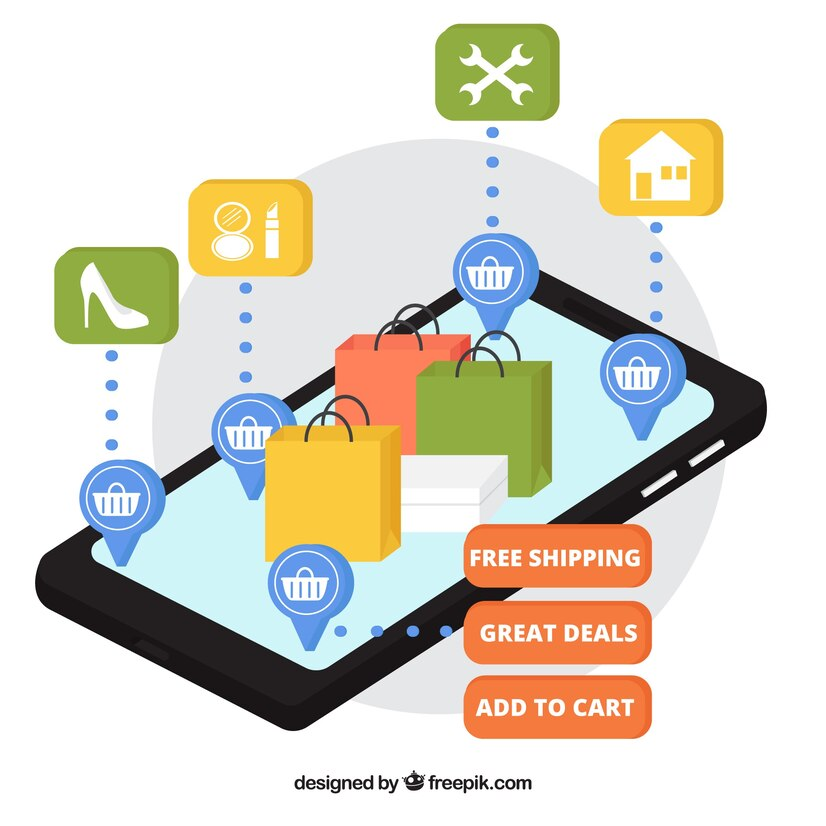
SOURCE: FreePik
In the United States, e-commerce sales, as a percentage of total retail sales, hover around 15%.
Websites enable you to choose your own photos, logos, text, colors, materials, and specifications for items like apparel, mugs, bags, tech accessories, and more. Customers receive a truly one-of-a-kind product they helped create that feels uniquely theirs.
While e-commerce brings many conveniences, brick-and-mortar stores continue to serve important purposes for shoppers.
Here are more expanded perspectives on the advantages of retail:
Nothing quite matches the satisfaction of browsing a store, making an impulse purchase, and instantly being able to use or enjoy the item. The dopamine hit of this feedback loop fuels further in-store spending. Time-sensitive needs like last-minute gifts or emergencies require instant solutions; online orders simply can’t deliver the way in-person shopping does.
Stores allow multi-sensory evaluations beyond sight. Feelings, textures, testing weight/balance, listening for sounds, even smelling scents—the full sensory experience gives a holistic understanding of quality. Fittings allow comfort and function checks. Salespeople provide expert demos and showcase features. Mistakes are avoidable.
Browsing serendipitously amidst curated displays stimulates creativity more than algorithmic online silos. Finding unexpected items sparks new interests/hobbies. Stores showcase whole categories that may not occur to shoppers otherwise. Discovery fuels future purchasing and relationship-building with brands.
Stores facilitate valuable bonding over shared experiences. Spending time together in public builds interpersonal connections and community. Interacting with other shoppers fosters chance encounters and conversations that strengthen the social fabric. Even solitary shoppers find comfort in bustling energy and people-watching.
One challenge facing e-commerce businesses is developing trust with customers. When shopping online, customers cannot see or touch products before purchasing.
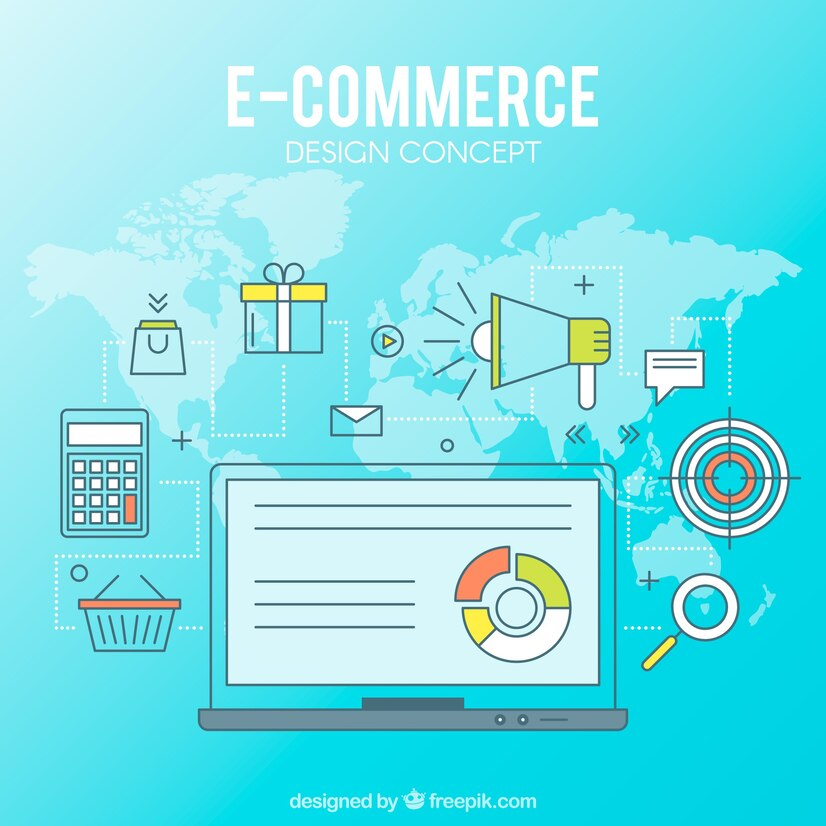
Source: FreePik
This crossover between digital and physical shopping means the customer experience must be consistent, connected, and convenient regardless of the sales channel.
One challenge facing traditional retailers is the rise of e-commerce giants. Online shopping continues to grow in popularity as consumers appreciate the convenience of purchasing from home.
A large percentage (around 90%) of consumers say free shipping is the top incentive that gets them to shop online more often.
Transitioning physical stores, supply chains and company culture requires strategic planning, yet consumer demands are shifting rapidly. Retailers must thoughtfully consider generational trends and societal changes to remain attractive options for current and future customers.
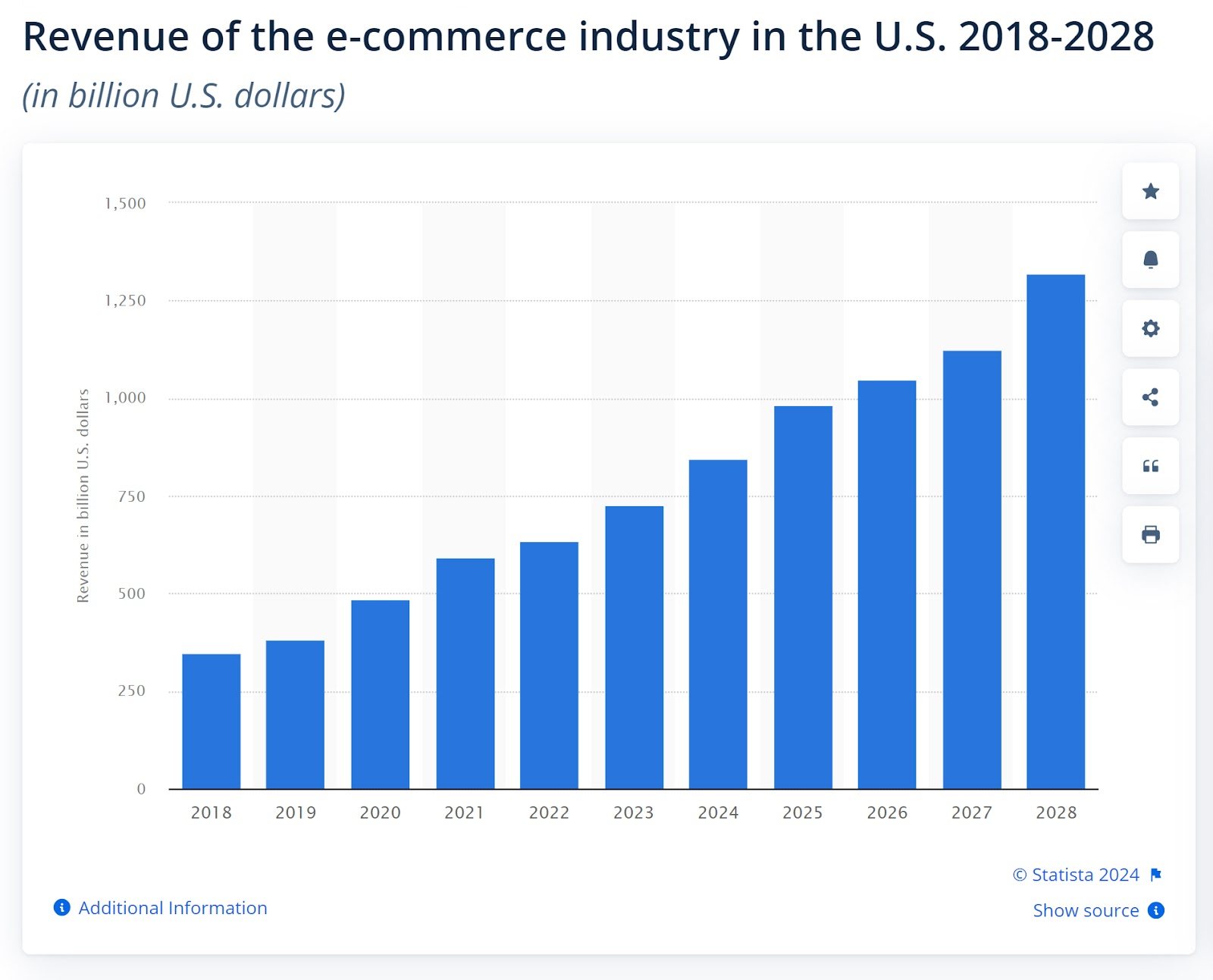
Source: Semrush
Over the past decade, the way we shop for everything from groceries to electronics has undergone a dramatic transformation. The convenience and vast selection available with a few clicks has many customers questioning if they really need to leave the house to shop at all.
As internet speeds and reliable delivery options improved, more mainstream customers felt comfortable making purchases without seeing items in person first. Customers have come to expect the same level of speed, selection and convenience virtually that they once could only access physically.
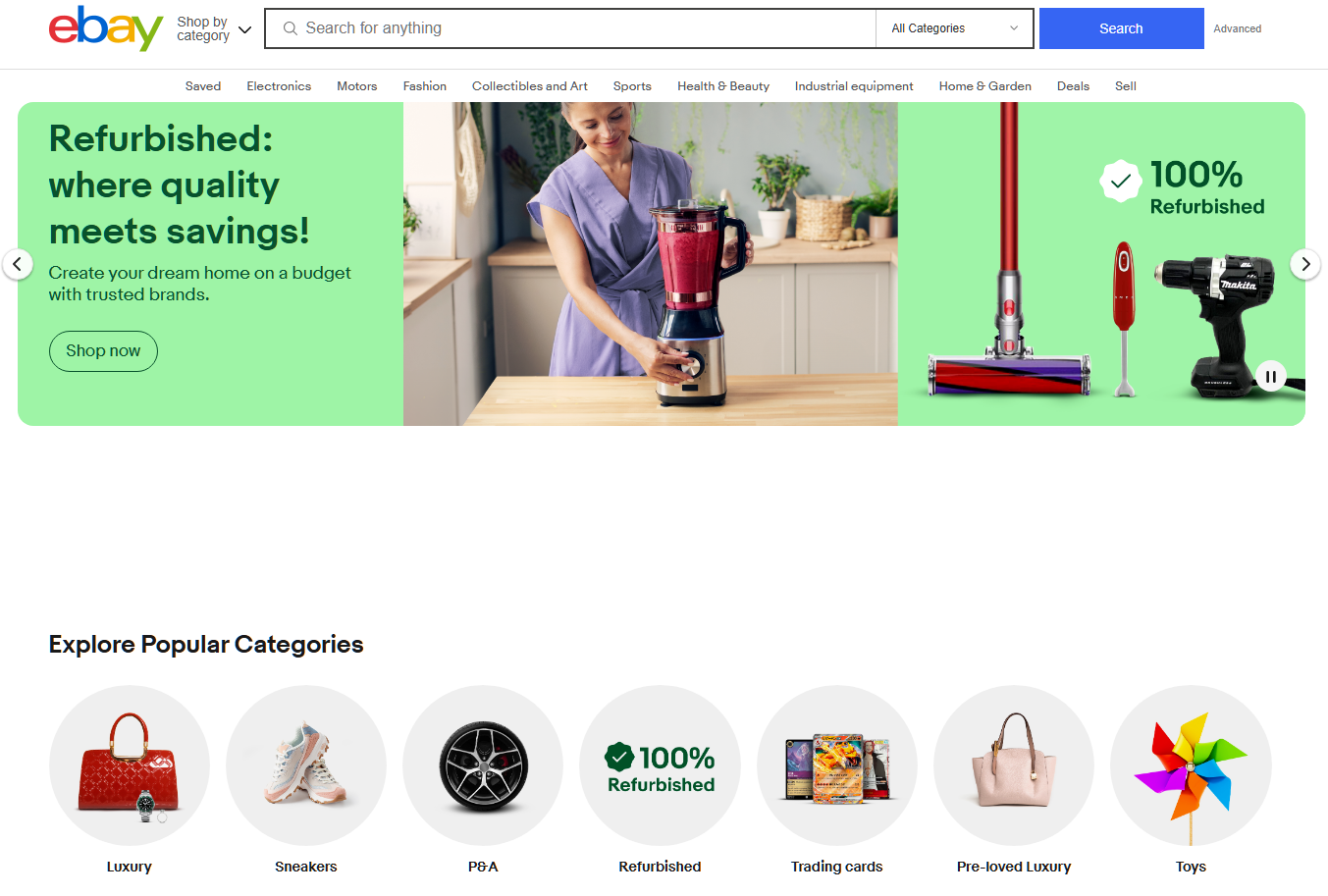
Whether you’re browsing aisles at the local mall or scrolling on your phone, the lines between e-commerce vs. retail shopping are blurring more each day.
Related: Ecommerce vs Retail: Can I Expand My Business Online?
The average return rate for e-commerce is higher than brick-and-mortar retail, estimated at around 20–30%.
This omnichannel approach recognizes that people shop in very personal ways and allows flexibility based on individual preferences. A retailer that can cater to each customer’s path, whether straight online or by mixing digital and physical steps, has a significant competitive edge.
As different demographics show varied preferences when it comes to shopping modes, the winning strategy for most retailers will be to have a strong multi-channel presence with smooth hand-offs between digital and brick-and-mortar channels. While e-commerce will continue chipping away at certain retail categories, a thriving retail ecosystem will depend on both online and offline storefronts learning to successfully coexist by catering to their respective consumer segments and complementing each other’s strengths. The future of shopping is omni-channel.
Read more:
What are the Types of Ecommerce Retail Models?
The future of retail will see more emphasis on online and mobile shopping. While brick-and-mortar stores will still exist, they will focus more on experiences like classes and events.
Both retail and eCommerce have their pros and cons, depending on what the business needs. An optimized strategy uses both channels effectively.
In the future, we’ll see even smarter shopping assistance from AI, more personalized recommendations, same-day and even instant delivery options, as well as innovative payment methods like voice shopping without apps.
The future of e-commerce and retail is omnichannel integration. Online and in-store shopping experiences will merge with innovations like online pickup in store, virtual try-ons, interactive product reviews, and personalized recommendations across all touchpoints.